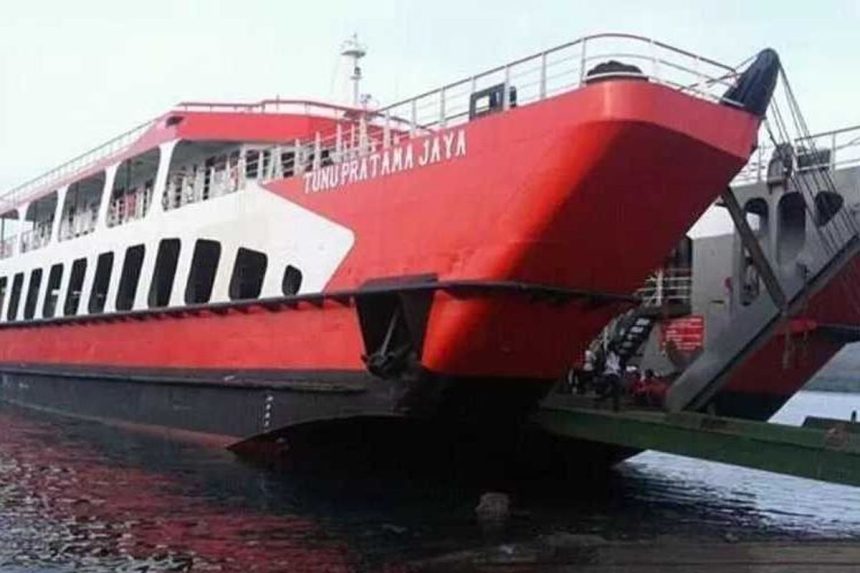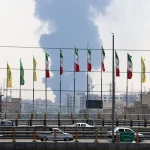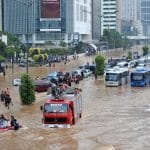Welcome to Liga Asuransi— a place to share trusted information about insurance and risk management.
We believe that education is the first step to proper protection. Please feel free to share this article with your colleagues, especially those in the transportation, logistics, and shipping sectors. Proper protection isn’t just about a policy, but about being prepared for real-world risks.
It was still 12:15 a.m. WITA when the night in the Bali Strait suddenly turned ominous. The KMP Tunu Pratama Jaya, a ferry carrying 65 people and 22 vehicles, suddenly experienced engine trouble. The ship’s lights went out. Emergency communications were sent. Within four minutes, the ship capsized and sank in the dark waters between Ketapang and Gilimanuk.
Family members cried on the pier. To date, nine people have died and 27 remain missing. A massive search operation has involved Basarnas (National Search and Rescue Agency), the Indonesian Navy (TNI AL), underwater sonar vessels, and surveillance aircraft. But one question hangs in the air:Are all passengers really covered by insurance?
This tragedy wasn’t just about bad weather or mechanical failure. It opened our eyes to a much bigger problem: a lack of education aboutmarine insurance, weak monitoring system, and the role ofinsurance brokerwhich is often not maximized.
Before we discuss how this system is supposed to work, let’s take a closer look:what really happened that night?
Chronology of the Sinking of the KMP Tunu Pratama Jaya
Tuesday evening, July 2, 2025. The weather at Ketapang Harbor was calm. The KMP Tunu Pratama Jaya was scheduled to cross from Banyuwangi to Gilimanuk, Bali—a short route traveled hundreds of times each month. The ship was carrying 65 people, consisting of 53 passengers and 12 crew members, as well as 22 vehicles of various types. No one could have imagined that night would be the ship’s final voyage.
At 12:15 a.m. WITA (Central Indonesian Time), approximately 15 minutes after setting sail, the ship’s crew reported problems in the engine room. Seawater began to pour in. Within seconds, the generator failed, the lights went out completely, and the ship lost control. Passengers began to panic. Some tried to put on life jackets, while others were at a loss for words.
At around 12:19 a.m., the ship began to list sharply. According to Basarnas reports and survivors’ testimonies, within just 4–5 minutes of the initial disturbance, the KMP Tunu Pratama Jaya sank completely to the seabed at a depth of approximately 60 meters.
There was no adequate warning. There was no time for standard evacuation procedures. Only instinct spoke that night.
The search operation began shortly after the SOS signal was received. Military vessels, helicopters, drones, and even ROVs (remotely operated vehicles) were deployed. However, the strong currents of the Bali Strait, bad weather, and pitch black conditions made the search a nightmare for rescue teams—and a lasting trauma for the victims’ families.
This incident serves as a reminder that maritime accidents can happen at any time, even on seemingly safe and routine routes. And when the unexpected strikes, protection is the only thing you can rely on.
Number of Victims & Challenging Search
The accident quickly became a national spotlight. Media reported constantly changing casualty figures—a reflection of the difficulty of the rescue operation at sea. As of this writing, official data shows9 people died, 27 still missing, and the rest were rescued by other ships near the scene of the incident.
On the mainland, the harbor transformed into an emergency post. Families of the victims waited anxiously. With each new update, tears broke out. Names were read out one by one. Some were hopeful, others were already bracing for the worst.
A joint team fromBasarnas, TNI AL, Polairud, and SAR volunteerswere immediately deployed. They used a variety of fleets: warships, rubber boats, helicopters, and even the Indonesian Air Force’s CN-235 aircraft. Underwater,ROV and object detection sonarhelp comb the depth of about 60 meters.
However, the search effort was not without obstacles. The Bali Strait’s ocean currents are notoriously fierce. Local fishermen even nicknamed these waves “thief waves” because they are fast and unpredictable. Combined with extreme weather and low visibility, the search had to be conducted in stages and was fraught with risks.
Every second counts. But time is also your greatest enemy. In maritime accidents, the chances of survival drop dramatically after the first 24 hours.
Behind all these efforts, a pressing question arises:Who will be responsible for the unaccounted for victims? And are their families entitled to insurance claims?
Is Everything Covered by Insurance?
After news of the sinking of the KMP Tunu Pratama Jaya spread widely, the public was not only shocked by the number of victims, but also began to question one important thing:Are all passengers, crew and cargo really covered by insurance?
According to the official statement, the deceased victims will receive compensation fromJasa Raharja amounting to IDR 50 million, and medical expenses for injured victims will be fully covered. This is in accordance with regulations governing basic protection for public transportation passengers in Indonesia.
But that’s just the beginning. Behind a tragedy like this, there are many layers of protection that passenger ships should have:
The Ideal Type of Marine Insurance
- Passenger Liability Insurance
Protecting every individual on board against the risk of accidents, injuries, and even death. - Vehicle and Goods Insurance (Cargo Insurance)
It’s mandatory for vehicles or goods being transported. In the case of the KMP Tunu, 22 vehicles were submerged. Did the owner cover the cost? - Hull & Machinery Insurance
Protecting the physical value of the ship from damage or total loss. - Legal Liability Insurance (Protection & Indemnity / P&I Insurance)
Covering legal claims from third parties, including the victim’s family.
Frequently Occurring Gaps
Unfortunately, not all ferry operators have comprehensive insurance packages. Many rely solely on basic government coverage. Some vehicle owners who board ferries even…didn’t know that the item wasn’t automatically insured.
Moreover, not all crew members are necessarily covered by employment or life insurance. And in many cases, the claims process is complicated, slow, and confusing for victims’ families.
The question is:Where is the oversight? Who ensures that protection is available, operational, and disbursed when needed?
The answer we will find in the next section: the vital role of insurance brokers in preventing tragedies like this from turning into total losses.
The Role of Insurance Brokers When Maritime Tragedies Occur
Many people assume that simply purchasing a policy is the end of their insurance business. However, in the risky world of shipping, the reality is far more complex.This is where the role of an insurance broker becomes very vital.
Brokers are not just agents selling products. It is customer representatives and advisors, both shipping companies, goods owners, and ship operators. Their task is not onlylook for the policy with the best premiums, but also:
- Analyze risk profile of the vessel and its operations
- Develop a comprehensive protection strategy (passengers, cargo, crew, assets)
- Make sure policy suitabilitywith field reality (not overclaim or underclaim)
- Accompanying you during claims — from documentation, negotiation, to disbursement
Imagine if KMP Tunu was accompanied by a broker
If KMP Tunu Pratama Jaya is accompanied by a competent insurance broker:
- Passenger policy can be expandedup to additional responsibilities, not just the standard Rp. 50 million
- Vehicle owners will be reminded to purchasecargo insurance special
- Ship owners can understand the risks of blackouts, aging engines, or extreme weather, and then adjust protection accordingly.
- When tragedy strikes,the victim’s family is not left confusedfacing the claims process
Further, the broker also works as liaison between regulators, ship owners and insurers, ensuring that no one escapes responsibility.
In developed countries, brokers are strategic partners in the shipping sector. In Indonesia, this role is often considered a formality—until disaster strikes, and it’s too late.
Important Lessons for the Maritime Industry & the Public
The tragedy of the sinking of the KMP Tunu Pratama Jaya was not just a maritime accident. It was…loud alarmfor the entire Indonesian shipping ecosystem—that many fundamental things are not running as they should.
From a technical perspective, allegations have emerged that the ship’s engine maintenance was inadequate, safety procedures were not strictly enforced, and cargo management was not strictly monitored. Meanwhile, from a protection perspective, gaps in the insurance system actually exacerbated the impact of the disaster.
For ship operators:
Insurance should not be considered merely an administrative requirement for shipping. It should be viewed as an integral part of risk management, not only for the ship, but also for the crew, passengers, and any vehicles or goods transported.
For regulators:
The government must be more assertive. Operational audits and insurance coverage must be conducted regularly. Seaworthiness certification cannot be granted without comprehensive validation, including third-party protection.
For the community:
Passengers have the right to know,What do they get when they buy a boat ticket?Does it include life insurance, property protection, and operator liability?
Accidents may not be completely avoidable. Butthe impact can be managed and reduced, if all parties fulfill their roles and responsibilities. And one of the simplest first steps is to ensure that there are professionals on hand from the start:an insurance broker who understands the industry and is committed to comprehensive protection.
Conclusion
The tragedy of the sinking of the KMP Tunu Pratama Jaya was not only a grief for the families of the victims—but alsoa hard slap for the world of shipping and the Indonesian maritime insurance system. Within minutes, human lives, vehicles, and valuable cargo went down with the ship. And as always, the big question arises: were they truly protected?
Now we realize that maritime accidents are not just about waves or engine failure. They are aboutwho prepares the protection, And how seriously all parties understand the risks at sea.
For those of you who are in the shipping, logistics, expedition or fleet management business,don’t wait for disaster to come. Make sure you are assisted by an experienced insurance broker, an expert in their field, and who is committed to your interests.
L&G Insurance Brokeris your trusted partner in maritime protection, marine vessel insurance, freight transportation, and passenger and crew protection.
Contact us at0811 850 7773for free consultation and insurance solutions that suit your business needs.
Share this article with your friends.
Education saves more than just assets—it saves lives.
L&G Insurance Broker – Peace With Its Members.















